20 April 2017
Wikipedia: "Pompeii was an ancient Roman town-city near modern Naples. Pompeii, along with Herculaneum and many villas in the surrounding area, was mostly destroyed and buried under 13 to 20 ft of volcanic ash and pumice in the eruption of Mount Vesuvius in 79 AD.
Researchers believe that the town was founded in the seventh or sixth century, At the time of its destruction, its population was estimated at 11,000 people, and the city had a complex water system, an amphitheatre, gymnasium, and a port.
Mount Vesuvius spewed forth a deadly cloud of solids and gases to a height of 21 miles, ejecting molten rock, pulverized pumice and hot ash at the rate of 1.5 million tons per second, ultimately releasing a hundred thousand times the thermal energy of the Hiroshima-Nagasaki bombings. The Roman settlements were obliterated and buried underneath massive pyroclastic surges and ashfall deposits.
The eruption destroyed the city, killing its inhabitants and burying it under tons of ash. Evidence for the destruction originally came from a surviving letter by Pliny the Younger, who saw the eruption from a distance and described the death of his uncle Pliny the Elder, an admiral of the Roman fleet, who tried to rescue citizens. The site was lost for about 1,500 years until its initial rediscovery in 1599 and broader rediscovery almost 150 years later by a Spanish engineer in 1748. The objects that lay beneath the city have been preserved for more than a millennium because of the lack of air and moisture. These artifacts provide an extraordinarily detailed insight into the life of a city during the Pax Romana. During the excavation, plaster was used to fill in the voids in the ash layers that once held human bodies. This allowed archaeologists to see the exact position the person was in when he or she died.
The remains of about 1,500 people have been found at Pompeii and Herculaneum. Some may have escaped, but the total death toll is unknown."
-----------------------------------------------------------------------------------------------------------------------------------------------------
Our visit:
These plaster casts of real people frozen in place at the time of death really shows what Pompeii most represents now - a city devastated by a volcano.
Researchers believe that the town was founded in the seventh or sixth century, At the time of its destruction, its population was estimated at 11,000 people, and the city had a complex water system, an amphitheatre, gymnasium, and a port.
Mount Vesuvius spewed forth a deadly cloud of solids and gases to a height of 21 miles, ejecting molten rock, pulverized pumice and hot ash at the rate of 1.5 million tons per second, ultimately releasing a hundred thousand times the thermal energy of the Hiroshima-Nagasaki bombings. The Roman settlements were obliterated and buried underneath massive pyroclastic surges and ashfall deposits.
The eruption destroyed the city, killing its inhabitants and burying it under tons of ash. Evidence for the destruction originally came from a surviving letter by Pliny the Younger, who saw the eruption from a distance and described the death of his uncle Pliny the Elder, an admiral of the Roman fleet, who tried to rescue citizens. The site was lost for about 1,500 years until its initial rediscovery in 1599 and broader rediscovery almost 150 years later by a Spanish engineer in 1748. The objects that lay beneath the city have been preserved for more than a millennium because of the lack of air and moisture. These artifacts provide an extraordinarily detailed insight into the life of a city during the Pax Romana. During the excavation, plaster was used to fill in the voids in the ash layers that once held human bodies. This allowed archaeologists to see the exact position the person was in when he or she died.
The remains of about 1,500 people have been found at Pompeii and Herculaneum. Some may have escaped, but the total death toll is unknown."
-----------------------------------------------------------------------------------------------------------------------------------------------------
Our visit:
These plaster casts of real people frozen in place at the time of death really shows what Pompeii most represents now - a city devastated by a volcano.
Standing columns with Mt. Vesuvius still looming behind. This volcano continues to endanger hundreds of thousands with Naples and other cities nearby, close enough to create new Pompeii's.
More casts, in the position they died, and other artifacts.
Mt Vesuvius looms large - this mountain was much taller before the eruption - and looks very similar to Mt St Helens, as it exploded in similar fashion. The big head, as well as other sculptures, were added in modern times, apparently to heighten the experience, although we didn't think that was necessary.
Gerri reads aloud from the tour guide book.
This area was a Roman fast food joint. Food was kept warm in the basins.
Font selections at the print shop - no, actually, we had no info on what this is about.
The amphitheater - the lighter colored seating is where the higher ups would have comfy seats placed for them.
Outside the stadium.
Inside the stadium.
Below the stadium bleachers - looks like a good place to hide from eruption, but they said there was no escape for anyone remaining in the city, with 600 deg F hot gases and ashes sweeping into it.
Today's Mt Vesuvius, with a sculpture of Icarus who flew too close to the Sun and fell to Earth with wings made with wax. This city in ruins was far larger than what we expected - the archaeological dig area over 150 acres, with some of it still to be excavated.




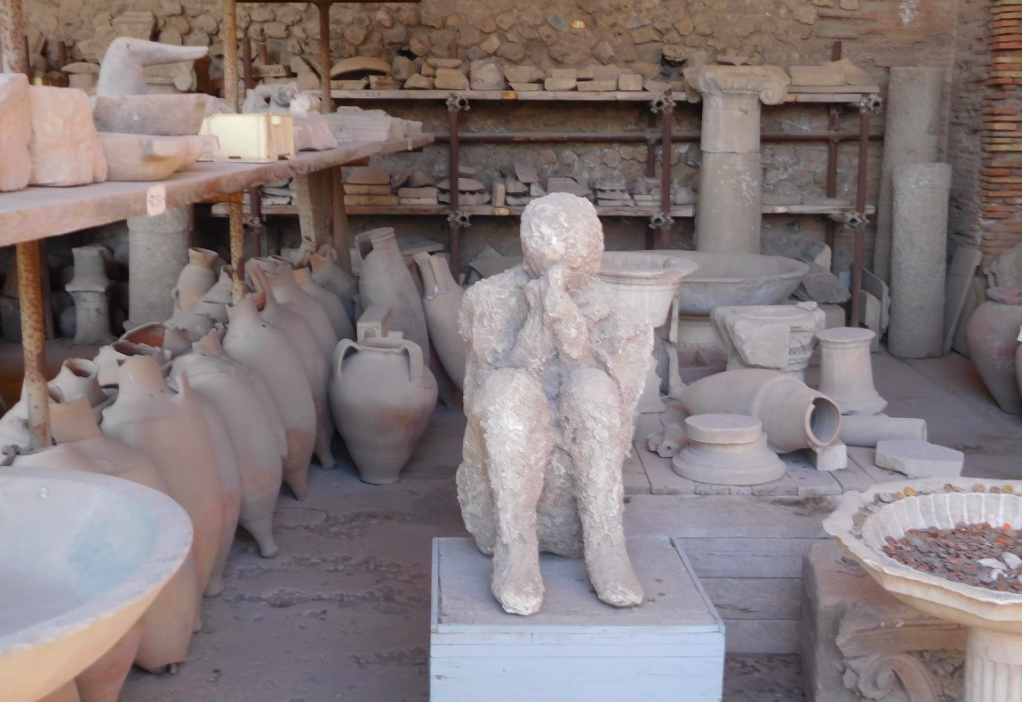

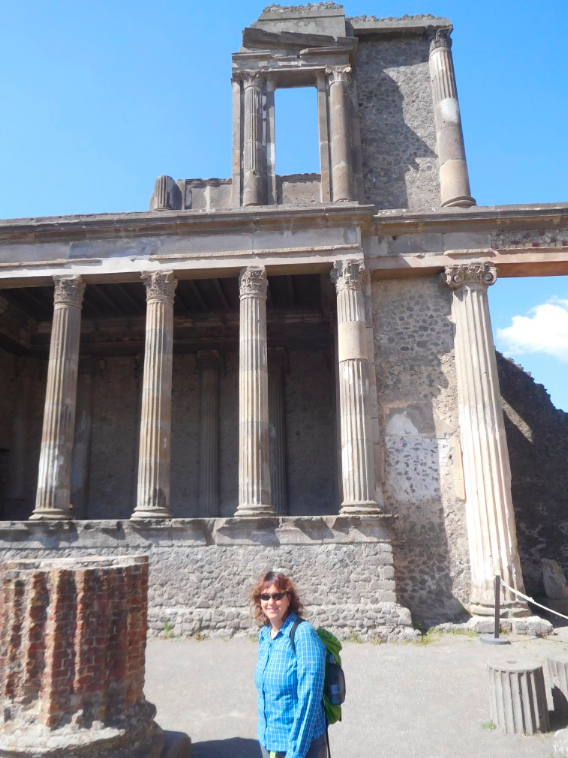


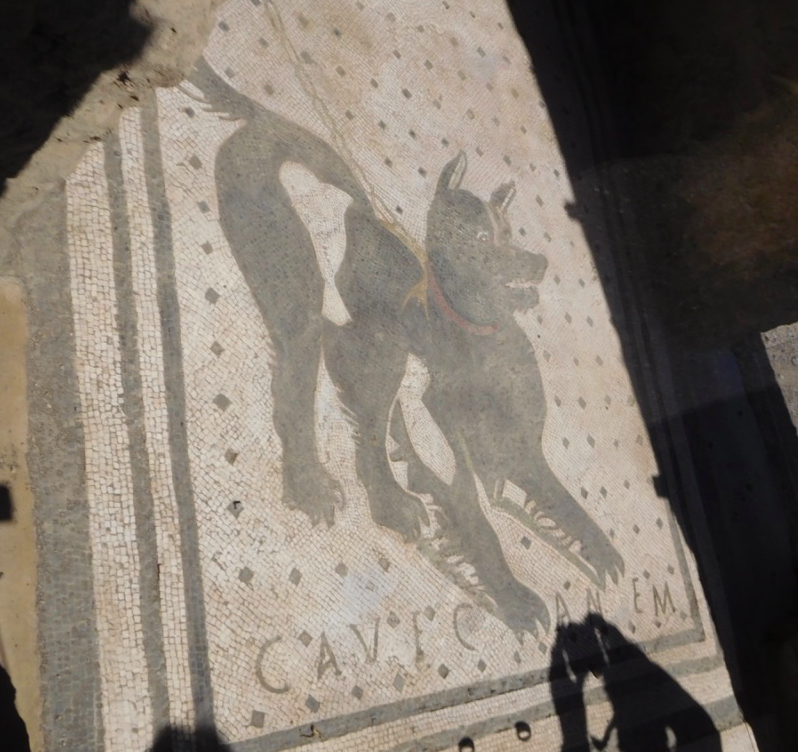



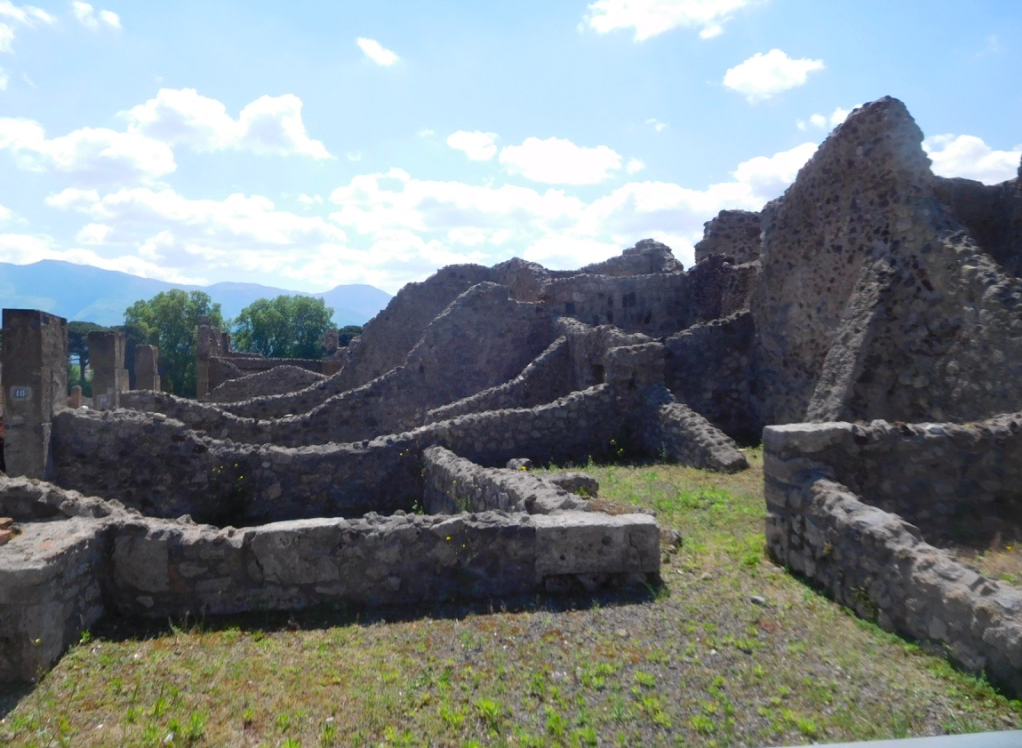
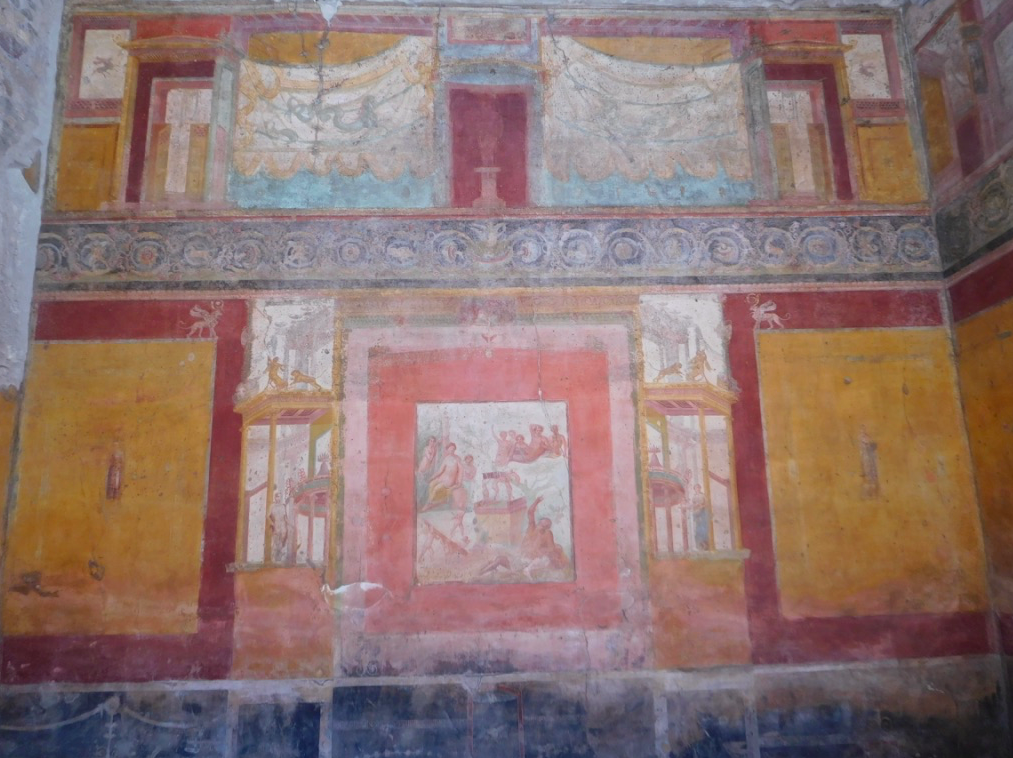

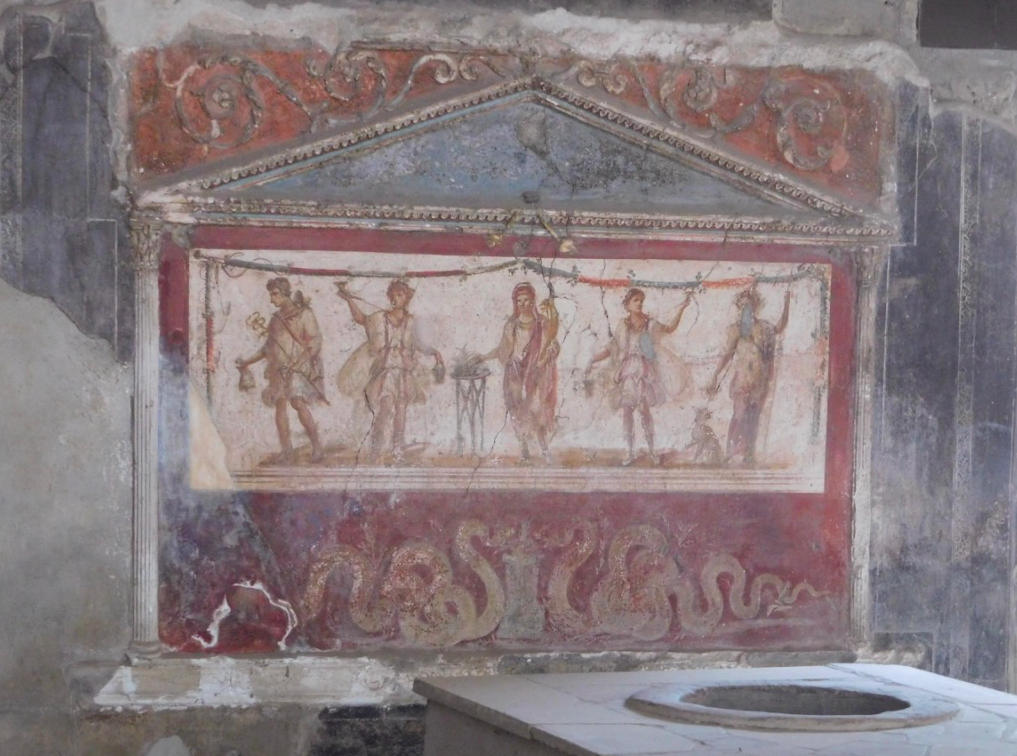

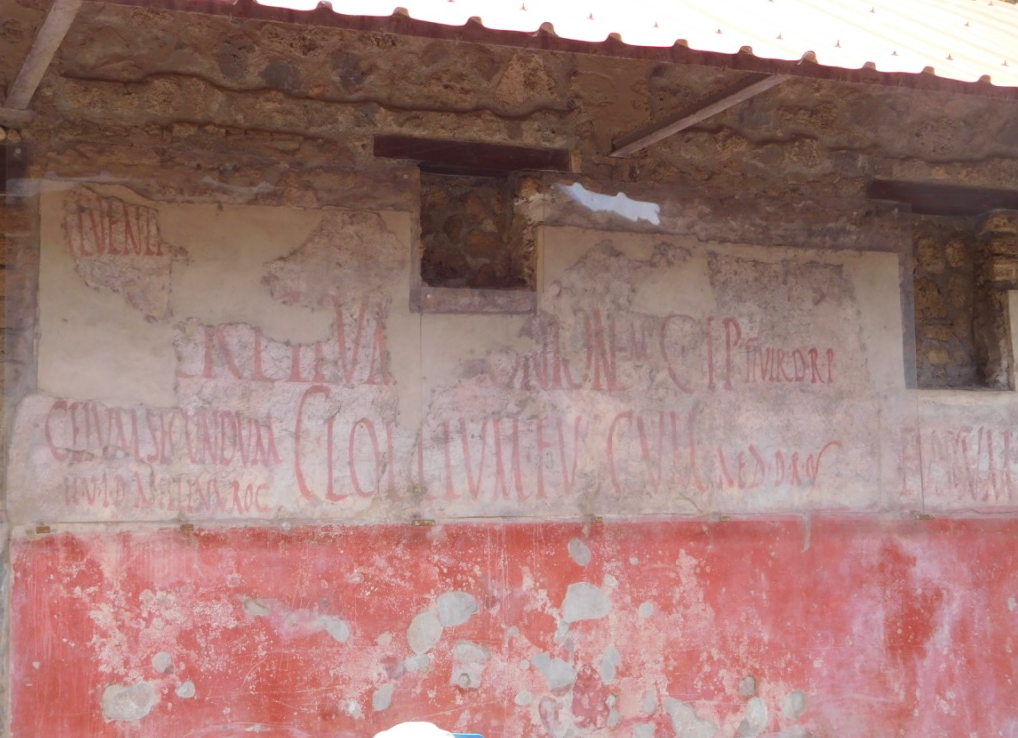


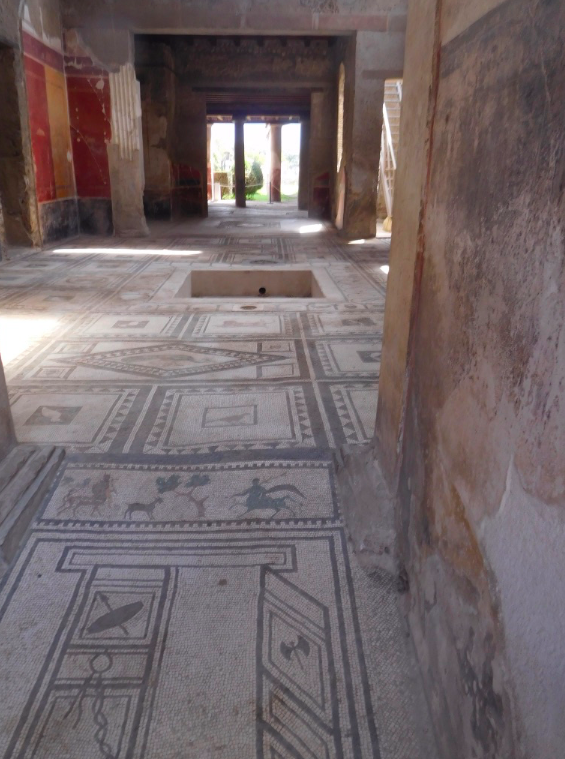






 RSS Feed
RSS Feed
